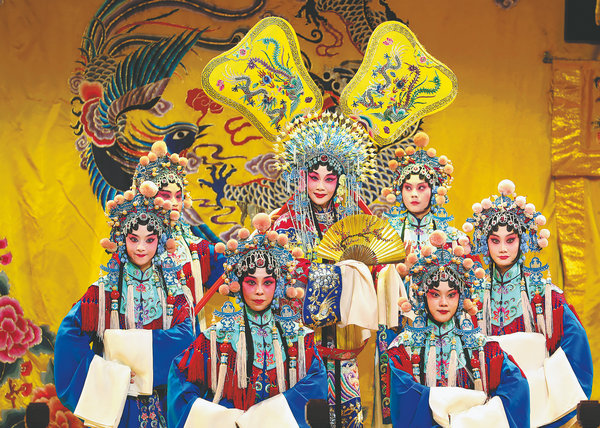Beijing's guilds enter golden era
By Chen Nan | China Daily | Updated: 2024-01-18 05:56

According to Xu Xiaohui, general manager of the Tianqiao Zenith Group, the Beijing-headquartered company in charge of the renovation of the guild hall, the complex has undergone several renovations. In 1984, it was placed on the cultural heritage protection list by the Beijing municipal government.
"This ancient complex is a wooden structure, so a key part of the renovation was to protect its buildings, while focusing on effective fireproof methods," says Xu. "Repair and reinforcement of the buildings was also very important."
After it opens formally to the public, the 2,000-square-meter complex is intended to become a new hub for tourists and fans of traditional Chinese opera.
Xu says that one highlight is a museum dedicated to the history of Peking Opera, where visitors can learn about the art form in the form of videos, pictures and books, and where they can get a close look at the costumes and stage props used by the masters of the past, an example of which is a costume made using the kesi technique — a pictorial silk tapestry technique — that was donated by the Beijing Fenglei Peking Opera Company. According to Song, it is over 100 years old. A paper fan, given by Mei Lanfang to Chen Delin (1862-1930) as a gift, is also on display.
There is also a space dedicated to the history of the Huguang Guild Hall. Song says that he is working on a new production, Night of the Museum, to teach audiences about Peking Opera, from its costumes and makeup, to the choreography used for hand and eye movements.
Beijing's guild halls first appeared during the Ming Dynasty (1368-1644) and reached their peak during the Qing Dynasty (1644-1911), when there were over 500 guild halls in the capital, mainly serving as functional spaces for students traveling from different parts of the country to take imperial examinations, and for the use of local officials.
Since 2021, the Beijing government has been busy reviving these old buildings and promoting their re-use.
"One of the most important aspects of keeping these old buildings alive is to protect them first. They are hundreds of years old, and when visitors enter, it is like traveling back to olden times, which makes the experience of attending a performance in them very special," Dong Ning, deputy general manager of the Beijing Performance and Arts Group, states in a previous interview.
In addition to the Huguang hall, increasing numbers of the city's old guild halls have been opened to the public, among them the Yanliao (Pigment) Guild Hall which was built by pigment merchants from Shanxi province in 1741, and the Shaozhou Guild Hall, which is 155 years old and was built by people from Shaozhou (modern day Shaoguan city) in Guangdong province. They have become new tourist sights, and present a range of programs, including live performances, exhibitions, and workshops highlighting items of intangible cultural heritage.
























